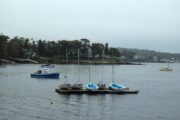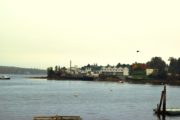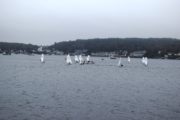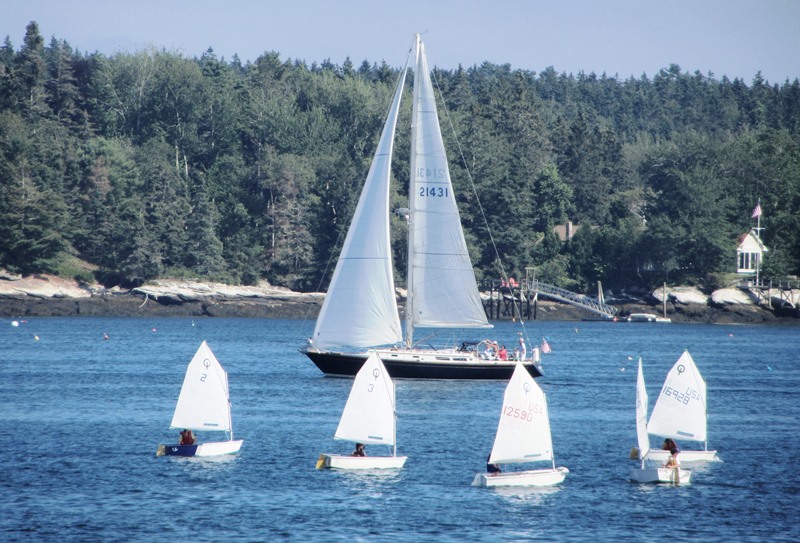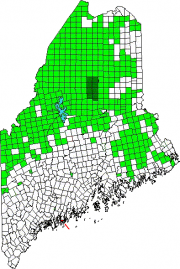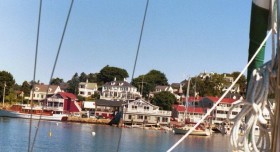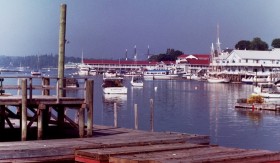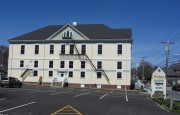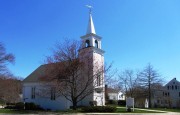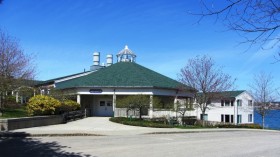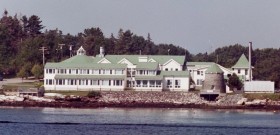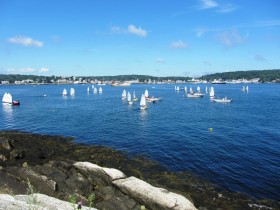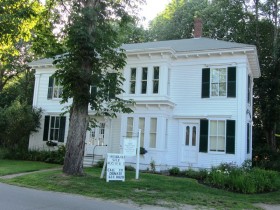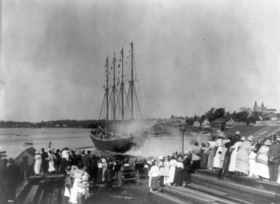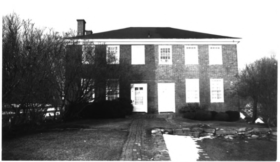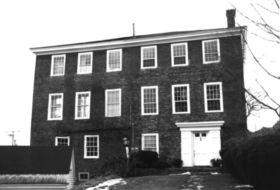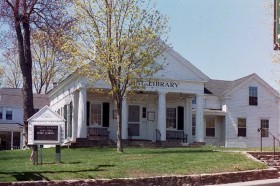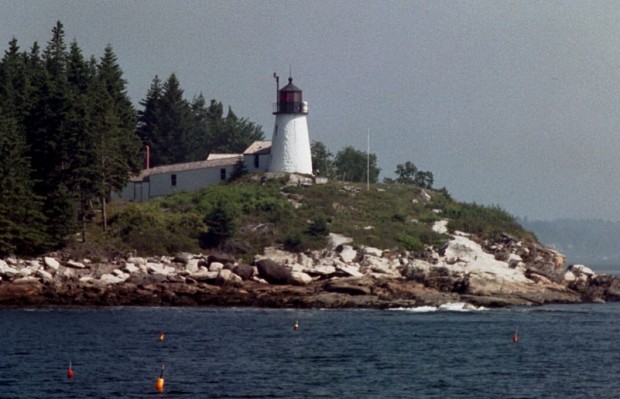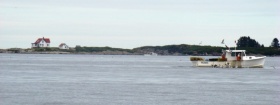- Boats on Floats (2021)
- Bigelow Labs, Ocean Science
- Sail Regatta in Fog (2012)
Optimist Sailing Dinghies Racing in Boothbay Harbor (2013) [click on photos, map, chart to enlarge]
| Year | Population |
|---|---|
| 1970 | 2,320 |
| 1980 | 2,207 |
| 1990 | 2,347 |
| 2000 | 2,334 |
| 2010 | 2,165 |
| Geographic Data | |
|---|---|
| N. Latitude | 43:50:50 |
| W. Longitude | 69:38:04 |
| Maine House | District 89 |
| Maine Senate | District 13 |
| Congress | District 1 |
| Area sq. mi. | (total) 9.2 |
| Area sq. mi. | (land) 5.8 |
| Population/sq.mi. | (land) 373.3 |
County: Lincoln
Total=land+water; Land=land only |
|
[BOOTH-bay HAR-br] is a town in Lincoln County, incorporated on February 16, 1889 from land set off from the town of Boothbay. It is a major attraction for summer visitors with its shops, restaurants, art galleries, marinas, and recreational fishing opportunities.
Tours to coastal islands, whale watching, and a safe and engaging harbor for sailors are some of the attractions for summer visitors. The town’s history as a tourist destination is a long one. Note references in the 1931 Town Warrant to support of promotional efforts.
Boothbay Harbor’s population remained surprisingly stable in the thirty years from 1970 to 2000, though a modest decrease was reported in 2010.
In the summer, tens of thousands of tourists roam the Harbor’s streets and frequent its restaurants and tour boats.
The town hosts the Bigelow Laboratory for Ocean Sciences, a private, non-profit research institution.
Funded primarily by federal grants, it cooperates with the Maine Department of Marine Resources in operating a Library and Information Center to support researchers, students and visiting investigators.
In August 2013 the 2013 Maine State Optimist Championship sailing event was held in Boothbay Harbor. Scores of sailing dinghies dotted the inner and outer portions of the harbor.
Boothbay Regional Historic Society is located at the 1874 Elizabeth F. Reed house and its grounds, Fullerton Park. The society has traditionally represented three towns: Boothbay, Boothbay Harbor, and Southport. Southport also has its own museum. Historically, Boothbay Harbor, along with its neighbors, has been known for its shipbuilding in the 19th and early 20th centuries.
The late former Congressman Stanley Tupper was born here in 1921. A Republican, he became an independent spokesman for environmental and other progressive issues.
National Register of Historic Places – Listings
Photos, and edited text are from nominations to the National Register of Historic Places researched by Maine. Historic Preservation Commission.
Full text and photos are at https://npgallery.nps.gov/nrhp
Auld–McCobb House
[Oak Street] The 1807 Auld-McCob House is one of the distinguished landmarks in Boothbay Harbor, and the oldest brick house. It was occupied by the families of merchant partners Jacob Auld and Joseph McCobb. At the close of the 18th century, Boothbay Harbor had developed into a thriving community by virtue of its proximity to coastal trade routes and fishing grounds. Among its most important businesses were fishing, shipbuilding and general retail businesses.
Joseph McCobb (1780-1825), the son of a merchant father, acquired his own business about 1797. Three years later Jacob Auld (1781-1835) opened a general store. Soon the two men merged their separate businesses into the firm of Auld and McCobb, with both partners remaining active until their deaths. In 1807 McCobb married Auld’s sister Margaret Auld, and the following year Auld wed Sarah Reed. It is thought that the brick double house was built about this time, an event which would clearly indicate the firm’s prosperity in the period prior to the War of 1812.
The building occupies an important position in the community’s architectural history. With only a handful of exceptions (most of which are limited to later 19th century commercial buildings), Boothbay Harbor’s architectural fabric is limited to wooden frame buildings. While many of these exhibit Federal period stylistic elements, few have the window sash arrangement and door configuration which are characteristic of early to mid-Federal style architecture in Maine. Furthermore, the overall scale of the Auld-McCobb House is uncommon in Boothbay Harbor.* [Frank A. Beard photos]
Boothbay Harbor Memorial Library
[Maine Route 27] The noble, impressively sited 1842 Greek Revival Temple Style building that houses the Boothbay Harbor Memorial Library was built as a private home by Cyrus McKown. Inheriting a commercial fishing business in Townsend Gut, McKown developed a highly successful shipping and shipbuilding enterprise in Boothbay Harbor. By the middle of the 19th century he had become one of the most important entrepreneurs in the community and built a home befitting his station.
In 1873 he sold the house to Chapman Reed whose heirs sold it to the town in 1923 for the Free Memorial Library dedicated to those who gave their lives in the World War. A free library, founded by vote of the town in 1906, had occupied various rented quarters until 1922 when a bond issue was authorized to purchase the Reed House. Apart from its obvious architectural merit and ties with Boothbay Harbor’s maritime history, the Library is a great example of preservation through adaptive re-use.
Old Gray House, Mid 18th Century to 1920
The Old Gray House, as it has been known since 1920, is a Federal Style home located on a small point on the west side of Sawyer Island in the of Boothbay. The rectangular house with rear ell and side porch occupies a few grassy and rocky acres facing south and west across the Sheepscot River.
The first building on this property was built by 1753 and served as a tavern and inn for over 35 years, at one point suffering a fire at the hands of the British army. What is now believed to have been a single story, plank frame, center chimney cape during the 18th century this property belonged to members of the Hodgdon family, the noted East Boothbay boat builders. Despite its coastal location it served not as a boatyard, but as a farm, wharf, and fishing business. In 1920 the Old Gray House was (erroneously) christened during the state’s centennial as the “oldest house standing in Maine” and shortly thereafter was remodeled, based on Colonial Revival sentiments and stylistic tenants by the architect Charles Way of Sudbury, Massachusetts.
As such, this property, with 250 years of continuous habitation and structural evolution, provides an important touchstone to both local history and social philosophy. The Old Gray House is significant in an area of early settlement and exploration, as well as for its Colonial Revival movements, and finally, as a good example of both Federal style and architecture and Colonial Revival architecture.
Pythian Opera House
[86 Townsend Avenue] The Pythian Opera House, known as the Boothbay Harbor Opera House, is a substantial, architecturally impressive 3½ story structure designed by the Portland architectural team of Francis H. Fassett and his son Edward F. Fassett. Erected by the Pythian Hall Company in 1894, the handsome Queen Anne style building with Shingle Style details housed Boothbay Harbor’s governmental functions until the 1930s. It served as the meeting halls for two fraternal organizations into the 1960s. It was also an important public hall used by the community as a site for entertainment and recreation until the late 1980s. The Pythian Opera House is significant for its long term association with the social and governmental history of the town and for its architectural significance.* [See another photo above near top.]
In the early 21st century, it has been a popular performance space operated by a non-profit organization.
Burnt Island Light Station
The 1821 Light Station is on the west side of the entrance to Boothbay Harbor. Its purpose was the safe guidance of ships into the Harbor about 1 1/2 miles away. The mission and buildings are basically the same today.
In 1888, a dead angle was put into the lantern at to prevent ships from becoming confused and get wrecked on rocks called the Cuckolds. About 1890 the light was changed from fixed white to fixed red with two white sectors covering the fairways into the Harbor. Two years later, the light was changed to flashing red every five seconds with two white sectors to prevent confusion with the other lights near the entrance. The lighthouse keepers were required to anticipate and prepare for malfunctions, enabling the light to remain operational through all kinds of weather.*
According to the the website “Burnt Island 2010,”
In April 1962, Burnt Island Light became the last lighthouse in New England to be converted from kerosene to electricity. Then, in 1988, it became one of the last Maine lights to be automated. Today the light is produced by a modern 300 mm lens.
Ram Island Light Station
[Ram Island, Boothbay Harbor] The 1883 Light Station, a guide to Boothbay Harbor, is the lone occupant of shallow Ram Island. The complex has maintained integrity of design, setting and association for over 100 years. A light station that would guide shipping in and around Boothbay Harbor was clearly needed in 1883 considering the nature of commerce at this busy port. [1986 photo by Frank A. Beard.]
In addition, Boothbay was rapidly developing a summer tourist industry that supported at least seven hotels and boarding houses. Steamboats from the village to Bath, Wiscasset, Augusta, Portland, and Boston needed assistance in navigating the area. The Light Station was automated in 1965.
Sprucewold Lodge, 1927-1964
Boothbay Harbor, is a community intimately connected with the water. After centuries of ship-building and fishing the seaside town, with numerous coves, bays, and islands was discovered by the “Rusticator” tourists who flocked to Maine in the late 19th century. Between the 1870s and the onset of the Great Depression, Boothbay Harbor and its neighboring towns experienced an explosion of growth due to seasonal visitors: hotels, cottages, cabins, and intentional “colonies” combining the three were built to accommodate the visitors on the edges of the town and along the forested and rocky shore. Sprucewold was a colony of cabins, hotel, dining hall, and recreational facilities located on the previously undeveloped Spruce Point on the west side of Linekin Bay. The original Lodge, built in 1926 burned just four years later but from that point forward the former Annex and a nearby cabin were transformed into a popular and lasting hostelry. Built in the Adirondack log cabin style, these two buildings and their associated service buildings have served both the summer colony and tourists from afar for 82 years, outliving many of its contemporary establishments. Sprucewold was an example of a pre-Depression tourist hotel on the Maine coast. Architecturally, it is also a rare surviving example of a type of Adirondack-style log buildings that was popular for resort architecture in the 1920s in Maine.
Boothbay Harbor (2001)
Form of Government: Town Meeting-Select Board-Manager.
Additional resources
Burnt Island 2010. “”About Burnt Island.” https://burntisland.wordpress.com/about/ (accessed February 26, 2015)
Chadbourne, Ava Harriet. Maine Place Names and The Peopling of its Towns
O’Brien-Merrill, Julie. One Hundred Years of Bayville History, 1911-2011. Maine. 2011.
Isaacson, Dorris A. Maine: A Guide Downeast.
Kappel, Philip. Boothbay Harbor, A Portfolio of Sketches. New York. Detroit Press. c1924.
McDougall & Keefe, photographer. “Launching of a ship, 4 mast schooner James E. Newson, Boothbay Harbor, Maine (c. 1920).” Library of Congress Prints and Photographs Division Washington, D.C. http://www.loc.gov/pictures/item/2012649643/ (accessed December 13, 2017)
*Maine. Historic Preservation Commission. Augusta, Me. Text and black & white photos from National Register of Historic Places: http://pdfhost.focus.nps.gov/docs/nrhp/text/xxxxxxxx.PDF and http://pdfhost.focus.nps.gov/docs/nrhp/photos/xxxxxxxx.PDF
Rumsey, Barbara. (e.d.) Boothbay Region Historical Sketches. Selections from Out of Our Past. 3 Vols. Boothbay Harbor, Me. Boothbay Region Historical Society. ??, c1999, 2006.
Rumsey, Barbara. Colonial Boothbay: Mid-1600s to 1775. East Boothbay, Me. Winnegance House; Boothbay Harbor, Me. Boothbay Regional Historical Society, c2000.
Thomas, Jennifer L. Archaeological Investigations in the Boothbay Region, Maine. Orono, Me. 1995 (Thesis (M.S.) in Quaternary Studies–University of Maine, 1995)


